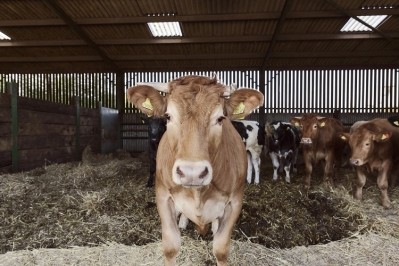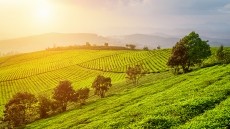Will precision agriculture ever be adopted?

Precision agriculture – the use of a network of sensors to respond to changing variables, and thus make agriculture more efficient and more sustainable – has significant potential, especially in the food supply chain.
However, adoption, along with integration, remains a key challenge. How can the data be integrated? And will farmers adopt the methods?
What can precision agriculture do for agriculture and food?
Precision agriculture has many benefits. “The first question that the farmers ask is: is it economic,” said Carlo Bisaglia, director of technology at Italian research organisation CREA, at an event at the Italian embassy this week.
“We have seen that there is a big growing interest in efficiency that we can introduce via precision farming.” For example, he said, you can save 20% of fertiliser by using an intelligent machine; you can save 8% of fuel by using auto steering. By making such savings, it’s both more cost-effective and, crucially, more sustainable.
However, one of the main benefits precision agriculture is what it can do for the food supply chain.
Data captured from the field provides suppliers with a greater level insight into the future. “Data provides a lot of information for the supply chain, especially with the fresh produce industry, things like strawberries. Retailers want to see what their supply will look like three weeks in advance, and that's almost impossible . . . they can only make a best guess. They don't know what the weather is going to do,” said Duncan Ross, business development manager for crops and horticulture at the UK Agri-Tech Centre, at the event.
“But by using data, capturing data from cameras, from sensors, you can see how fruit develops, you can integrate that in weather forecasts and then you can predict what that fruit will be like maybe three weeks away. Which is exactly what the suppliers want. But it also guarantees that those producers have space on the supermarket shelf.”
However, despite the benefits, there are some barriers to full adoption of precision agriculture.
Is agricultural data integrated?
The different sets of data in the UK, said Ross, are not integrated but collected on a range of different platforms. This means it needs to be integrated manually.
This, added Alessio Bolognesi, agri-digital secretary at manufacturers federation FederUnacoma, is a problem not just in the UK, but worldwide. “Now you have very complex systems, made up of different pieces, maybe bioenergy, maybe livestock, different types of crops, different types of machines, logistics, and all of those should be integrated to have a real value, if you don't have (mutually) interpretable data, this is not possible.”
Some networks, he stressed, do exist to make different sets of agricultural data mutually interpretable.
Data is important even for technology such as AI. In order for AI to be used in agriculture, stressed Bolognesi, it needs to recognise the world around it – the plants, the insects. For this, it needs to be trained on data, which “needs to be of high quality, huge amounts, and of course, all this data needs to be interpreted in the same way, and we need a common understanding of that information.”

How quickly can new technology be adopted?
The spread of precision agriculture throughout Europe varies widely, according to FederUnacoma’s Bolognesi. But what are the barriers to full adoption?
One challenge, suggested Bolognesi, is education. Without education, he said, “farmers will buy machines and technologies without having any clue how to use them.”
Another issue is regulation. AI, said Bolognesi, can perform ‘very specific operations,’ but legislation is incoming which will place several restrictions on its use in agriculture. Agriculture, he suggested, is considered a high-risk application, which means that it will need third party certification. This may add costs on to the process.
Data is also being regulated, which is good for farmers in some respects but it will also have a significant impact on costs. The cyber security act, he added, is ‘very strict’, and he suggested a trade-off should be found.
Regulation, added the UK Agri-Tech Centre’s Ross, speaking about his work regulating agro-robotics, should be ‘as simple as possible,’ and the industry shouldn’t be overburdened. Too much regulation, he suggested, would harm adoption.
If full adoption is to be achieved, Ross suggested, it must be done through farmers themselves. Farmers are more likely to listen to other farmers than technology manufacturers.
“Farmers are more likely to listen to one another than to someone driving up the driveway trying to sell them a piece of equipment. Because they've been burned many times before by buying something that was going to change their life and frankly hasn't."


















